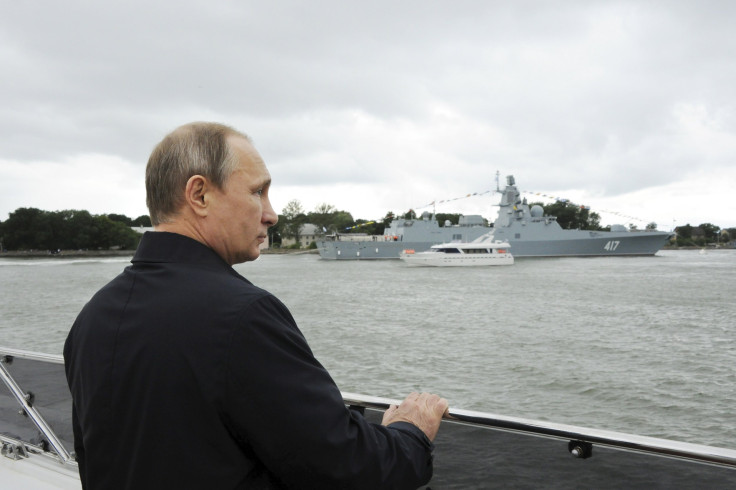Russia Amends Navy Doctrine To Counter NATO On Black Sea, Maintain Presence In Atlantic And Mediterranean

Russia on Sunday released its revised maritime doctrine, aimed at boosting the Russian navy’s strategic positions on the Black Sea, while also helping the country’s military maintain a strong presence in the Atlantic Ocean and Mediterranean Sea. According to officials, the move is aimed at countering NATO’s “inadmissible expansion” near the country’s western borders.
A 2010 version of the doctrine also identified NATO as a major threat to Russia. However, the recent conflict in eastern Ukraine and Moscow’s alleged involvement in aiding pro-Russian rebels there have further deteriorated relations between Russia and the West. Published Sunday on the Kremlin's website, the updated doctrine focuses on “developing infrastructures” for the country’s fleet stationed in the Black Sea off the Crimean peninsula, which was annexed by Russia in 2014, Agence France-Presse (AFP) reported.
The revised policy underlines “the inadmissible character of the Alliance's plans to move military infrastructures towards its borders,” according to a post on the Kremlin website, cited by AFP. The doctrine also called for the “accelerated reconstitution and completion of strategic Russian positions” in the Black Sea, while “guaranteeing an adequate military naval presence for Russia” in the Atlantic region.
Russian President Vladimir Putin approved the amendments on Sunday, calling them a “milestone event for the future of the Navy,” Russia Today reported, adding that the updated doctrine covers four functional areas, including naval activity, maritime transport, marine science and the development of mineral resources; and six regions, including the Atlantic, the Arctic, the Pacific, the Caspian Sea, the Indian Ocean and Antarctica.
“Our attention towards the Atlantic is justified by the expansion of NATO in the East,” AFP quoted Russian Deputy Prime Minister Dmitry Rogozin as saying, highlighting “the accent put on the Atlantic and the Arctic” in the revised policy.
Last week, Russia’s state-run news agency RIA Novosti reported that the country’s Ministry of Defense could send Tupolev Tu-22M3 supersonic long-range strategic bombers to Crimea in response to the increasing U.S. military buildup in Eastern Europe.
In June, NATO defense ministers tripled the alliance’s rapid response force to 40,000 personnel, while “carefully assessing the implications of what Russia is doing, including its nuclear activities.”
© Copyright IBTimes 2024. All rights reserved.





















